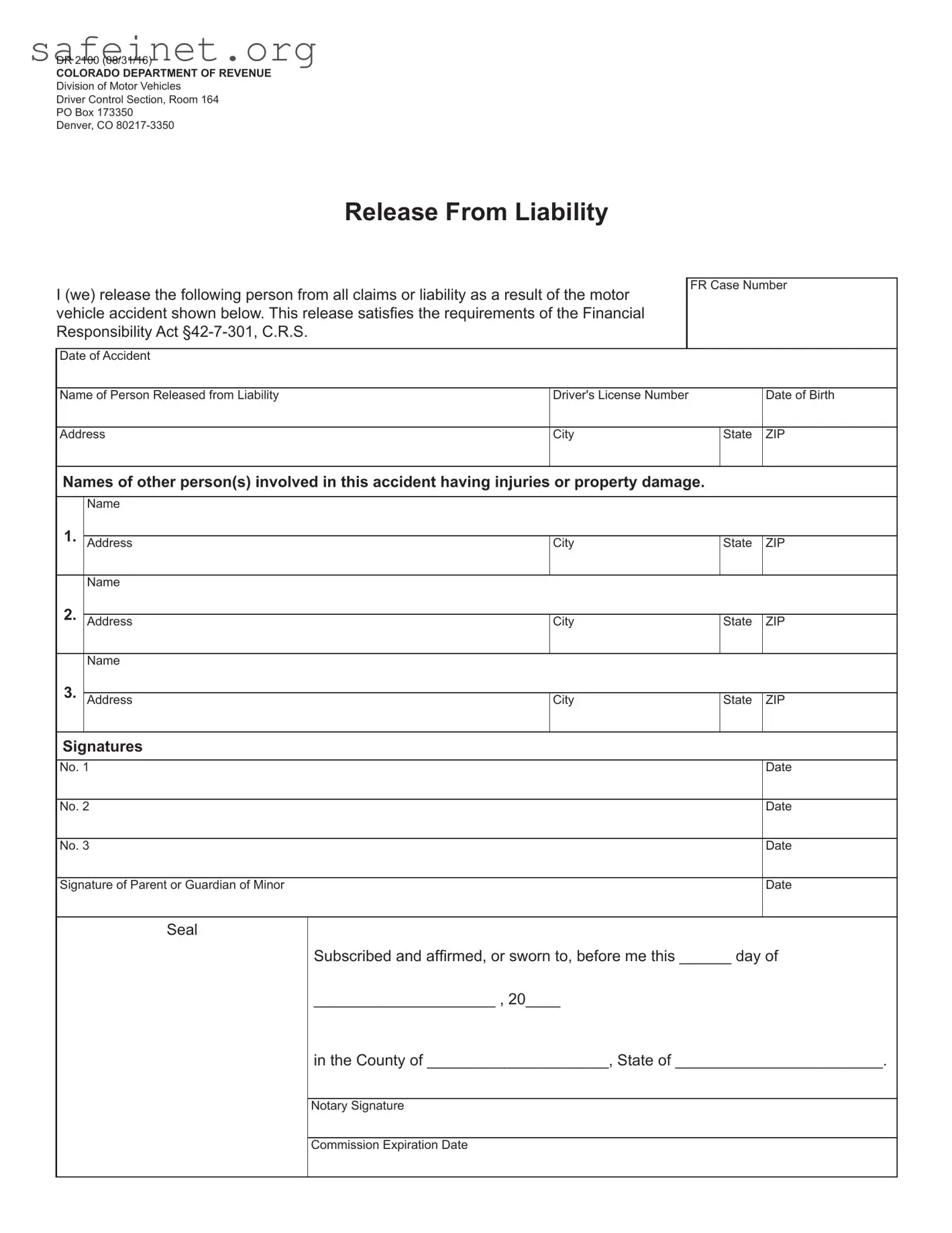What is the Colorado Dr 2100 form used for?
The Colorado Dr 2100 form is primarily used to release a person from liability following a motor vehicle accident. It serves as a legal document that acknowledges a specific individual’s release from any claims or liability associated with the accident described in the form. This form helps ensure compliance with Colorado's Financial Responsibility Act.
Who needs to fill out the Colorado Dr 2100 form?
Typically, all parties involved in a motor vehicle accident may need to fill out this form if they wish to release another party from liability. This includes the individual or individuals who are relinquishing their claims, as well as potentially their parents or guardians if minors are involved in the accident.
What information is required on the form?
The form requires several key pieces of information, including the date of the accident, the Financial Responsibility case number, and personal details about the person being released, such as their name, driver's license number, date of birth, and address. Additionally, it asks for the names and details of other individuals involved in the incident who sustained injuries or property damage.
What happens after completing the form?
Once the form is properly filled out and signed by the relevant parties, it must be submitted to the appropriate authority, usually the Colorado Department of Revenue's Division of Motor Vehicles. The release may be notarized, which adds an additional layer of verification. After submission, the parties involved should keep copies for their records.
Is notarization required for the Colorado Dr 2100 form?
While notarization is not strictly required for the Colorado Dr 2100 form to be valid, it is highly recommended. Having the signatures notarized can help prevent disputes about the authenticity of the signatures and the voluntary nature of the release.
What should I do if I change my mind after signing the release?
If an individual wants to rescind their release after signing the Colorado Dr 2100 form, the situation may become complicated. The release is typically binding once it is executed. It is advisable to consult with a legal professional to understand what options might be available and the potential implications of attempting to withdraw consent.
Can the Colorado Dr 2100 form be used for all types of accidents?
Yes, the Colorado Dr 2100 form can be utilized for various motor vehicle accidents, regardless of their severity or circumstances. However, it is essential to consider the nature of claims arising from the accident. In cases involving significant injuries or complex liability issues, seeking legal advice before using this release is advisable.
What is the significance of the Financial Responsibility Act in relation to the form?
The Colorado Financial Responsibility Act mandates that drivers maintain liability insurance and outlines how individuals can manage and report financial responsibility following an accident. The Dr 2100 form helps fulfill these legal requirements by establishing a formal release of liability, thereby allowing parties to document any agreements reached post-accident.

